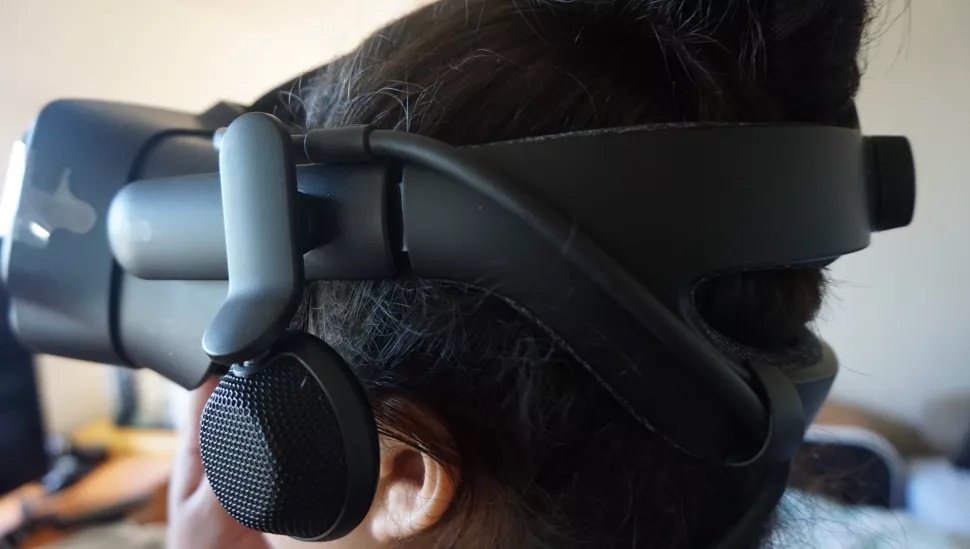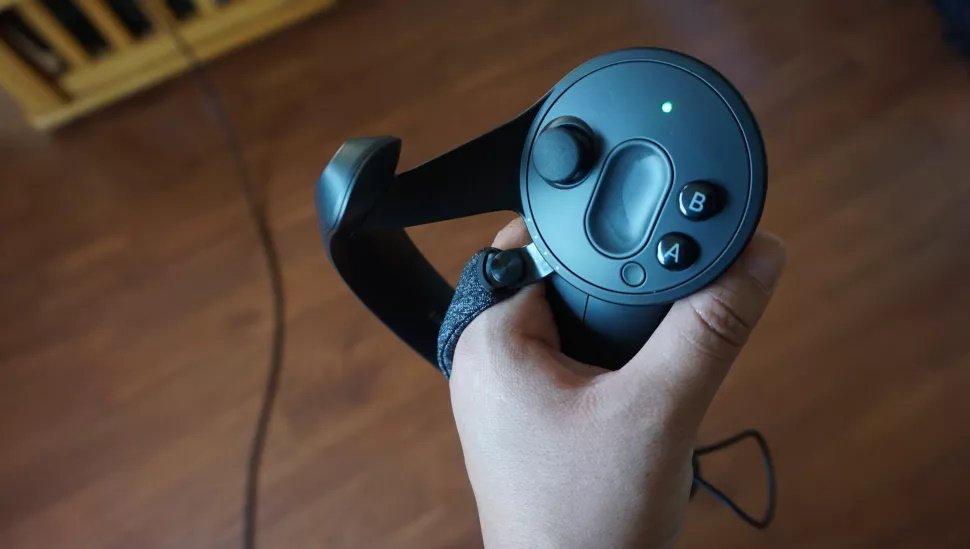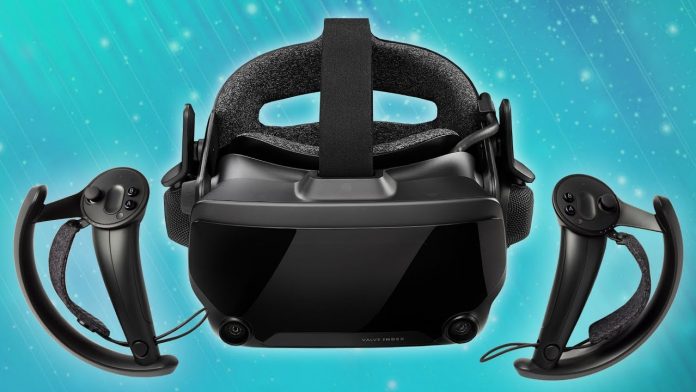Table of Contents:
How relevant is the Valve Index virtual reality headset, a few years after the release? Consider its design, performance and settings.
Valve has played a huge and important role in the advancement of VR over the years through its tracking system and the SteamVR platform. But it wasn’t until 2019 that it released its own VR headset — it was called the Valve Index.
Even today, two years after launch, the Valve Index is one of the best VR headsets money can buy. It has an ultra-sharp display that works well even with older graphics cards, a wide field of view, a high refresh rate, and Valve controllers that can track the movement of each individual finger.
But the VR offered by Valve Index is very expensive – the Valve Index headset costs $999. And before we start praising it as our VR savior, it’s worth noting that it’s not without its flaws, including the lack of good VR games on Steam and the troublesome SteamVR setup process.
More recently, a problem arose with the Valve Index, which has little to do with the filling and software of the headset – it just became difficult to buy. Valve CEO Gabe Newell said that the necessary components for its production are produced in the Chinese city of Wuhan and were not available during the pandemic, so this will not change anytime soon.
Should these shortcomings be a barrier to buying a Valve VR headset if you find one? Not at all.
Design.

The Valve Index is easy to describe as another nondescript VR headset in the same vein as any Oculus Rift or HTC Vive headset, but as you know, the devil is in the details.
On the front is a glossy plastic bezel above the two front-facing cameras, which can be used for pass-through video and possibly AR apps. Put on the headset and you can feel the stone gray pads that are located inside: they don’t look like the ones Oculus uses on the Rift S – it feels comfortable and cozy.
There are two adjustments for size adjustment: one on the left side that changes the physical distance from the lens to the eyes, and the other on the back panel that can be used to make the belt tighter or looser. Although the fit of the strap is undoubtedly important – we can see this in almost any headset. But setting the distance from the lenses to the eyes is rare. This is what allows the Index to achieve industry-leading field of view performance.
How does this happen? Science explains this easily, but basically, the closer the screen is to your face, the wider your field of view. The problem here is that people who wear glasses will not be able to bring the lenses directly up to their eyes, which means they will have a similar field of view to that available on other headsets.
Speaking of exact numbers: The Valve Index uses a dual LCD display with a resolution of 1440 x 1600 for each eye. Unlike Oculus, which actually lowered the refresh rate of its displays for the Oculus Rift S, the Valve Index has a 120Hz display that can be boosted up to 144Hz. By comparison, the more expensive Vive Pro has a lower refresh rate and a smaller field of view, so those are great specs.
Inside the box is the headset itself, the new Valve Index controllers and version 2.0 base stations that need to be installed in the room. Now, if you already have a Vive or Vive Pro headset, the first generation base stations are compatible with the Valve Index.
We won’t dwell on this aspect, but the fact that the Index uses base stations at all seems like a step backwards, even if the end result is good. For example, the Valve Index does a much better job of tracking behind the back of the hand (we know this is a rare use case) than any other headset. Case in point: not once during our practical work did the system lose controllers. Obviously, things can happen with further use, but so far so good.
However, its reliance on external trackers puts the Index behind the Oculus Rift S, which allows you to run room-scale VR without any external tracking sensors sitting on the shelf. It’s a compromise you’ll make by choosing the Valve Index over the Oculus Rift S, but it’s worth it.
Performance.

Surprisingly, it would seem that all these features require serious power from the PC, but in fact everything worked perfectly with our very old Nvidia GTX 980 graphics card. This is undoubtedly good news for people who do not have money to upgrade the GPU after buying a $1,000 virtual reality headset, and that could allow more people to discover VR.
This last point is important because as more people get interested in VR, more developers will see the business case for making VR games – right now, Steam’s selection for VR is a little sparse compared to the ever-expanding main store.
However, when we played new games like the Valve Moondust demo, we couldn’t help but smile. Games not only look great on a high resolution screen and run smoothly even on our less than ideal hardware, but they also become more interactive with the Valve Index controller. Being able to release items by opening your hand – a perfectly normal action in the real world – at first seems unnatural in the VR world after using the controllers of other headsets. But gradually you can no longer imagine this action otherwise.
Unfortunately, not all games support the advanced gestures of the new Valve Index controllers. In fact, during our testing, we found quite a few games that didn’t work with these gestures. According to Valve, more games will be optimized for the headset in the future, but right now there are only about three dozen such games – a decent amount to start, but still, this is only a small part of the VR games available on Steam.
When talking about virtual reality, sound quality should always be considered. Valve Index uses its own solution, which works incredibly well in every sense. Headphones are capable of transmitting a large amount of detail without distortion, and even though they are a couple of centimeters from the ear, the sound is still quite loud. In addition, this approach looks more hygienic if you want to give the headset to another person to try – the ears never come into contact with the pads.
We achieved a lot over the course of several sessions – we played a bit of the Beat Saber campaign, sliced fruit in Fruit Ninja, and smashed some robots in Space Pirate Trainer: the controllers performed just fine. At the end of the day, the charge dropped to one stick, but it’s safe to assume that it will take about five hours of playtime before the controllers need to be recharged, and about an hour on a charge to a full charge.
Setup and SteamVR.

The biggest annoyance we found with the headset after using it for over a month is that SteamVR often malfunctions.
Anyone who has used an HTC Vive or Vive Pro will tell you that SteamVR is constantly asking for attention, telling you that something is disabled, or that your firmware is out of date even though it has just been updated, or just displays a message stating that the hardware could not be found. This is especially unpleasant if you just wanted to play a little in your free time, for example, at lunchtime.
This happened to us several times during the entire period of testing, and we experienced a real sense of deja vu – testing the Vive Pro just over a year ago was accompanied by the same problems. Friends and readers have also complained about the lengthy and difficult process of setting up the original Vive, only to find many new bugs the next time it is launched.
In Valve’s defense, the setup process has gotten a little clearer and easier over the years. The headset works out of the box without much hassle, and the base station 2.0 setup proved to be a bit faster than before. But there is still a problem: if something in the room changes, for example, you move the base stations because you wipe the shelf, you will have to calibrate everything again and go through the entire setup process again.
Summarizing.
The Valve Index is one of the best virtual reality headsets currently on the market, but at the same time, it comes with everything that can scare away from VR. Setup is complicated and time consuming, updates often cause connection issues, and you can easily get new errors every time you turn it on again.
However, these issues aside, this is a really good VR headset. Its high resolution, high refresh rate screen allowed us to use it for extended periods of time without discomfort compared to most other VR headsets. The Valve Index controllers are a big step up from the ones that come with the Vive.
But all of these performance improvements have to be weighed against the price of the headset — that’s a lot of money to pay for software that contains so many bugs, especially when Oculus has a great VR headset of its own. Oculus Quest and now Oculus Quest 2 can be purchased for less than half the price of the Valve Index.
There is no doubt that the Valve Index will become the default VR headset standard in the future. It’s a technological breakthrough over the HTC Vive, and runs much smoother than the Vive Pro, a powerful headset that struggled to live up to the promise of high-quality VR.
However, the question is, is this headset better than the Oculus Quest? The Valve Index has better specs, but the Quest is more comfortable and sure to be more appealing to anyone who doesn’t have the time for a bunch of high-tech tweaks or that much money to opt for the Index. Every man to his own taste.

